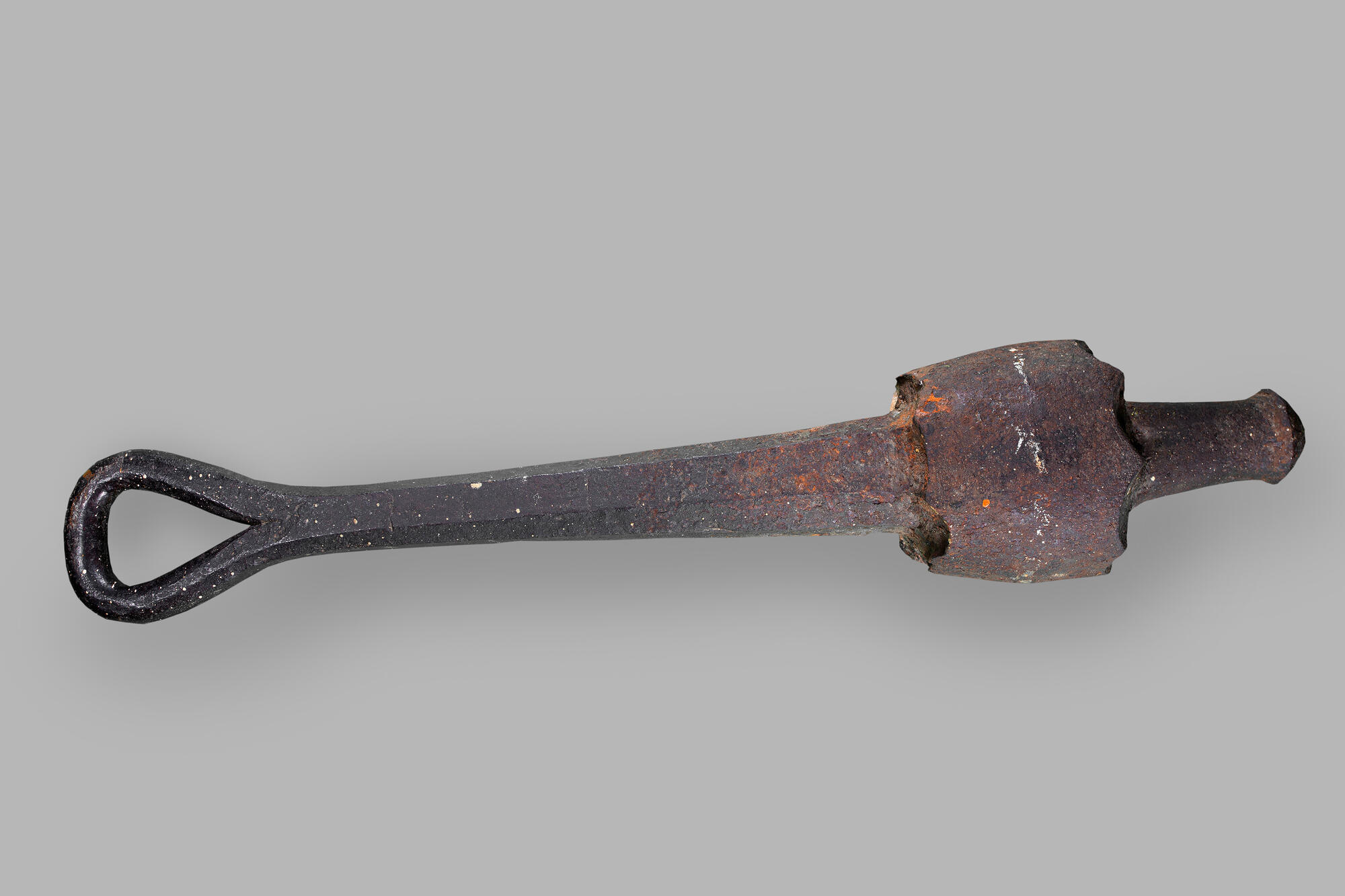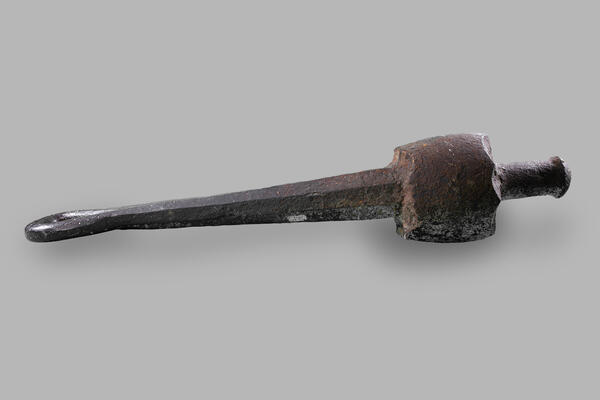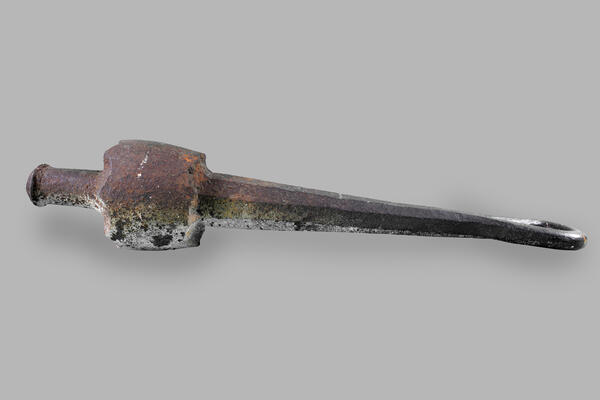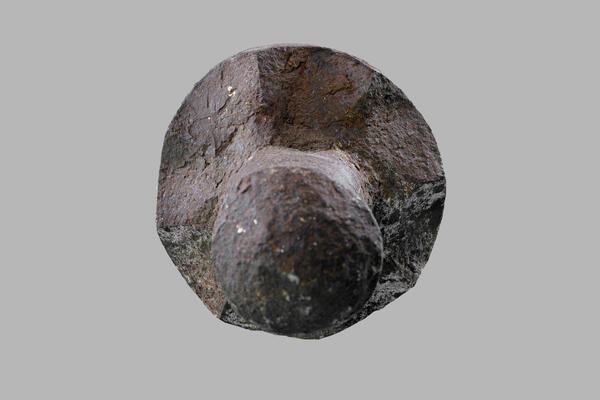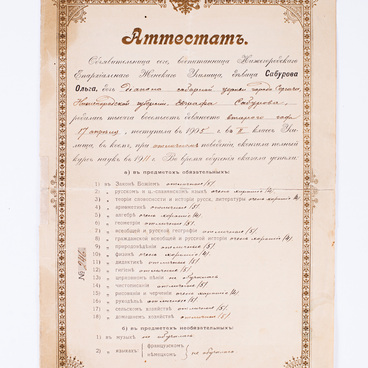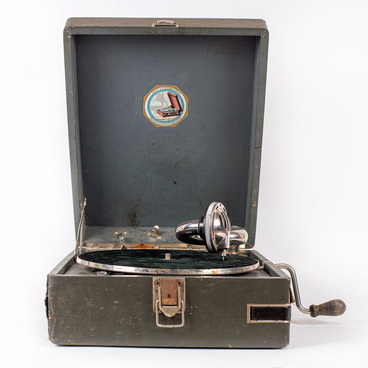The clapper of a bell is a wrought iron rod that makes a sound when it strikes the sound bow. Usually, the clapper weighed about 1/25 of the weight of the entire bell. The clapper was hung on a steel loop at the top of the bell. This loop or shackle was inserted into the bell mold before casting and formed an integral part of the bell.
Bell ringing was part of the Russian national culture and faith. It was used to call people to a church service or veche, report a fire, or announce events of national importance. The bells were treated like people, which is indicated by the Russian names of their parts, which can be translated as the head (known in English as a headstock), waist, ear (known in English as a canon), skirt, lip, and tongue (known in English as a clapper). If it was used for announcing bad news, the bell could be punished: whipped, have its clapper removed, or sent into exile.
At the turn of the 20th century, the clapper from the museum’s collection was used in the Sergach District, Nizhny Novgorod Governorate. It was part of a large bell at the Vladimirsky Cathedral, the largest church in the district. The cathedral is located on the top of a hill in the historic district of Sergach. It was built after the Patriotic War of 1812 as a tribute to the memory of war victims. Nearby is the ancient Kolody spring where the first streets of the future settlement began about 700 years ago. A long time ago, an oak chapel in the name of St. Sergius of Radonezh was built there. In 1802, when the development plan for the town of Sergach was approved, a square was established near the chapel, “where a stone church was to be founded.”
The Vladimirsky Cathedral was closed under Soviet rule in the 1930s. Like many churches across the Soviet Union, the cathedral was devastated, and many of its valuable possessions, books, manuscripts, and ancient icons disappeared. The bell tower was destroyed, and the bells were taken off and melted down. The Sergach residents took away the clapper of one of the bells and buried it in the sand at the bottom of the Sergachka River, where it lay for 60 years until it was found.
During the Great Patriotic War, the church housed the “Shveinik” and “Shoemaker” artels. Regular service resumed in the Vladimirsky Cathedral only in 1994, and the active restoration of the church began in the 2000s. The clapper of the central bell has remained in the Museum of Local Lore.
Bell ringing was part of the Russian national culture and faith. It was used to call people to a church service or veche, report a fire, or announce events of national importance. The bells were treated like people, which is indicated by the Russian names of their parts, which can be translated as the head (known in English as a headstock), waist, ear (known in English as a canon), skirt, lip, and tongue (known in English as a clapper). If it was used for announcing bad news, the bell could be punished: whipped, have its clapper removed, or sent into exile.
At the turn of the 20th century, the clapper from the museum’s collection was used in the Sergach District, Nizhny Novgorod Governorate. It was part of a large bell at the Vladimirsky Cathedral, the largest church in the district. The cathedral is located on the top of a hill in the historic district of Sergach. It was built after the Patriotic War of 1812 as a tribute to the memory of war victims. Nearby is the ancient Kolody spring where the first streets of the future settlement began about 700 years ago. A long time ago, an oak chapel in the name of St. Sergius of Radonezh was built there. In 1802, when the development plan for the town of Sergach was approved, a square was established near the chapel, “where a stone church was to be founded.”
The Vladimirsky Cathedral was closed under Soviet rule in the 1930s. Like many churches across the Soviet Union, the cathedral was devastated, and many of its valuable possessions, books, manuscripts, and ancient icons disappeared. The bell tower was destroyed, and the bells were taken off and melted down. The Sergach residents took away the clapper of one of the bells and buried it in the sand at the bottom of the Sergachka River, where it lay for 60 years until it was found.
During the Great Patriotic War, the church housed the “Shveinik” and “Shoemaker” artels. Regular service resumed in the Vladimirsky Cathedral only in 1994, and the active restoration of the church began in the 2000s. The clapper of the central bell has remained in the Museum of Local Lore.
